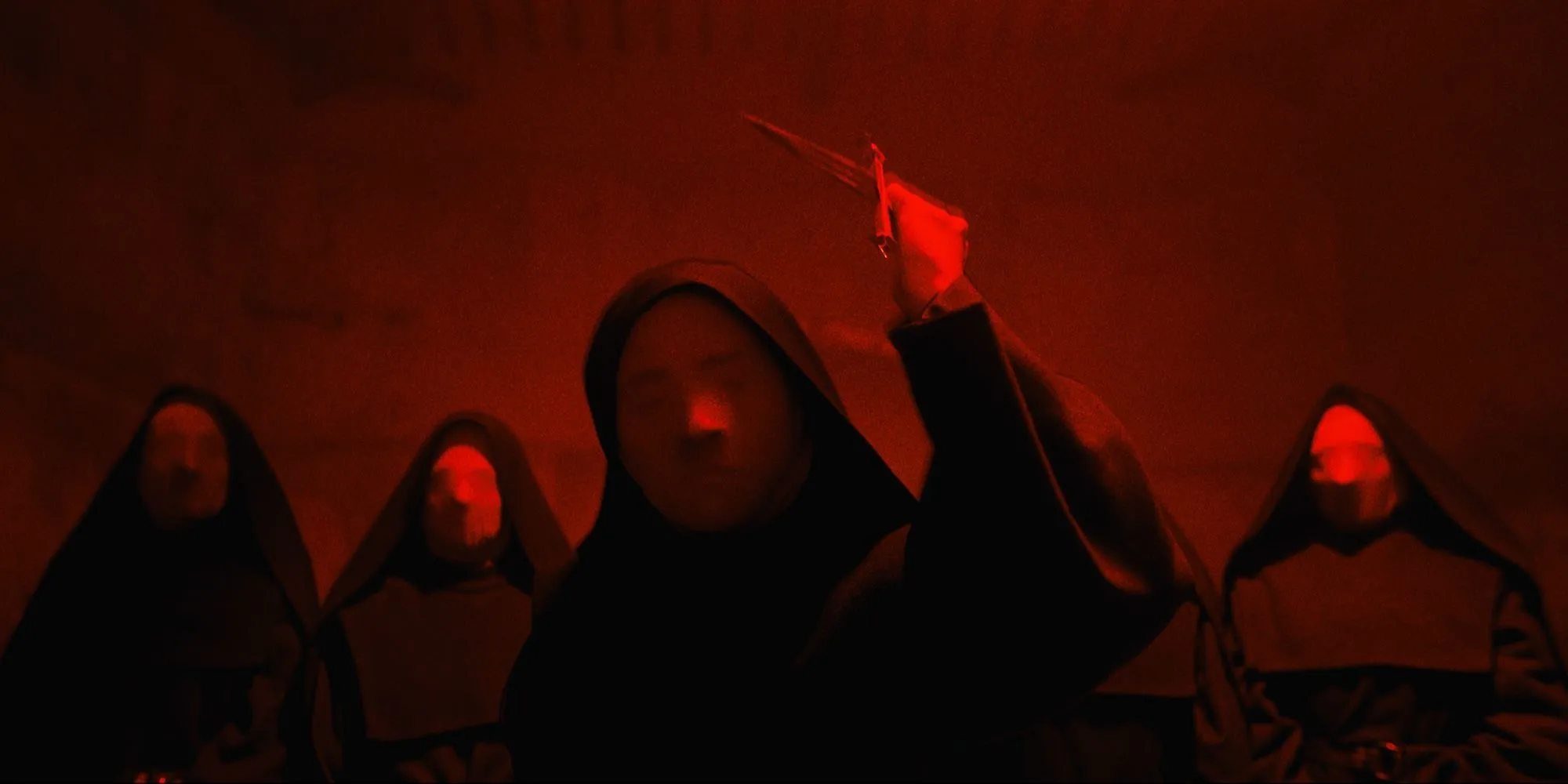
Immaculate: A Disturbing Dive into Religious Horror
The 2024 horror film Immaculate features Sydney Sweeney, who not only stars as Sister Cecilia but also produced the film. Critics have generally responded positively, highlighting Sweeney’s remarkable performance. The narrative escalates to an unsettling climax, with Sister Cecilia navigating a complex miracle pregnancy marked by fear and resentment towards Father Tedeschi. The disturbing backdrop includes traumatic scenes, such as the brutal silencing of a fellow nun, Gwen, whose tongue is cut out for opposing the convent’s secrets.
Sister Cecilia’s Desperate Escape from the Convent
In a desperate attempt to escape confinement before her childbirth, Sister Cecilia fakes a miscarriage, relying on a lifeless chicken to cover her tracks. However, Father Tedeschi uncovers her plan, revealing his twisted genetic experiments where he claims to have created a new Jesus from DNA remnants of a crucifix. Horrified, Sister Cecilia sets fire to his lab. As her labor approaches, she takes refuge in the convent’s catacombs, where she confronts and kills Father Tedeschi, ultimately giving birth to an entity that defies categorization.
Does Sister Cecilia Kill the Newborn in the Film’s Conclusion?
The Uncertain Nature of the Newborn

As she escapes, Sister Cecilia gives birth in solitude and, with a primal instinct, uses her teeth to sever the umbilical cord. Grabbing a sizable stone, she prepares to strike the newborn. The film abruptly cuts to black, leaving viewers questioning whether she committed the act.
Given her harrowing circumstances—becoming pregnant against her will and experiencing intense trauma during her confinement—the likelihood that she crushes the newborn seems high. The creature’s strange sounds further imply that it may not have been entirely human, leading to speculation about its true nature and the potential destruction of Sisiter Cecilia’s last connection to Father Tedeschi’s sinister experiments.
What Exactly Does Sister Cecilia Deliver?
The Ambiguity Surrounding the Newborn

The uncertainty surrounding whether Sister Cecilia killed her child is compounded by indications that the infant is anything but ordinary. The lack of typical newborn cries and the creature’s rugged breathing suggest that it might be a corrupted being. Immaculate deliberately avoids showing the newborn, fueling speculation about its origins.
Could this be a twisted second coming of Christ? Although plausible, the existence of genetic modifications brought about by Father Tedeschi questions the legitimacy of such a claim. The ominous circumstances of the birth lead to the assumption that Sister Cecilia likely delivered something sinister, highlighting the film’s underlying themes of reproductive autonomy.
A Closer Look at the Deaths in Immaculate
Sister Cecilia’s Reprisal Against the Convent

Throughout Immaculate, numerous deaths unfold, mainly during the movie’s harrowing climax. Sister Cecilia kills the Mother Superior with a crucifix in self-defense and later, in a fit of rage, torching Father Tedeschi’s lab leads to his fiery demise after she stabs him. The film subtly reveals the offscreen death of Gwen, who faces fatal punishment from the other nuns for her defiance.
Other notable casualties include Sister Mary, who attempts to flee from the convent, only to be buried alive by her peers. Sister Isabella meets her end by jumping off the roof, driven by jealousy over Sister Cecilia’s unnatural pregnancy.
The Dark Intentions of Father Tedeschi
A New Jesus: The Twisted Goal

Father Tedeschi’s motivations behind Cecilia’s pregnancy arise from a disturbing desire to artificially usher in a new era, one that echoes of the second coming of Jesus Christ. Utilizing DNA recovered from a crucifix nail, he believed it was his life’s mission to reshape Christianity. While the film offers scant insight into Tedeschi’s psyche, his conviction defines his brutal experimentation.
The Symbolism of the Red Masks in Immaculate
The Mysterious Role of the Red Masks

Throughout the film, various nuns wearing red masks symbolize the controversial rituals that govern their lives. Although their exact meaning remains elusive, they seem to be followers of Father Tedeschi, complicit in his malevolent pursuits by ensuring that others remain unaware or subdued.
The Core Significance of Immaculate’s Conclusion
A Message of Bodily Autonomy

At its heart, Immaculate culminates with Sister Cecilia reclaiming her autonomy, delivering a poignant commentary on women’s rights over their own bodies. Initially perceived as a vessel for her pregnancy, she ultimately asserts her will against the oppressive forces that sought to dictate her fate, spotlighting the broader horrors of consent and control during pregnancy.
Audience Reception of Immaculate’s Finale
Critics have offered a mixed yet largely favorable reaction to Immaculate’s conclusion. The ambiguous finale—leaving viewers uncertain about the fate of Sister Cecilia and her newborn—was either celebrated as strategic filmmaking or criticized for lack of resolution. Sweeney noted in an interview with Entertainment Weekly that multiple endings were filmed, with their initial decision to keep the final act shrouded in mystery reflecting their creative vision:
“We shot it multiple ways…but our instinct was always to never show it, and so we went with our first take.”
The decision not to reveal what Sister Cecilia had birthed sparked intense discussion among viewers, even as Sweeney’s portrayal, especially during the climactic moments, garnered considerable acclaim.
Sydney Sweeney’s Behind-the-Scenes Insights
Behind-the-Scenes Revelations from the Star

As both the lead actress and co-producer, Sydney Sweeney has provided illuminating insights into the creative journey of Immaculate. She disclosed that although an animatronic being was crafted to portray the newborn, it was ultimately excluded from the final cut. Her understanding of Sister Cecilia’s evolution connects pivotal scenes to the character’s empowerment:
“When she says, ‘This is not God’s plan.’…She realizes she has to stop them herself.”
Director Michael Mohan also affirmed that the choice to exclude the creature was intentional, emphasizing that the narrative focus should center on Sister Cecilia’s emotional tribulations rather than the physical outcome of her pregnancy:
“The creature doesn’t matter. It’s really just about capturing that pain, anger, relief, disgust, all of those things that Sydney conveys so brilliantly.”




Leave a Reply